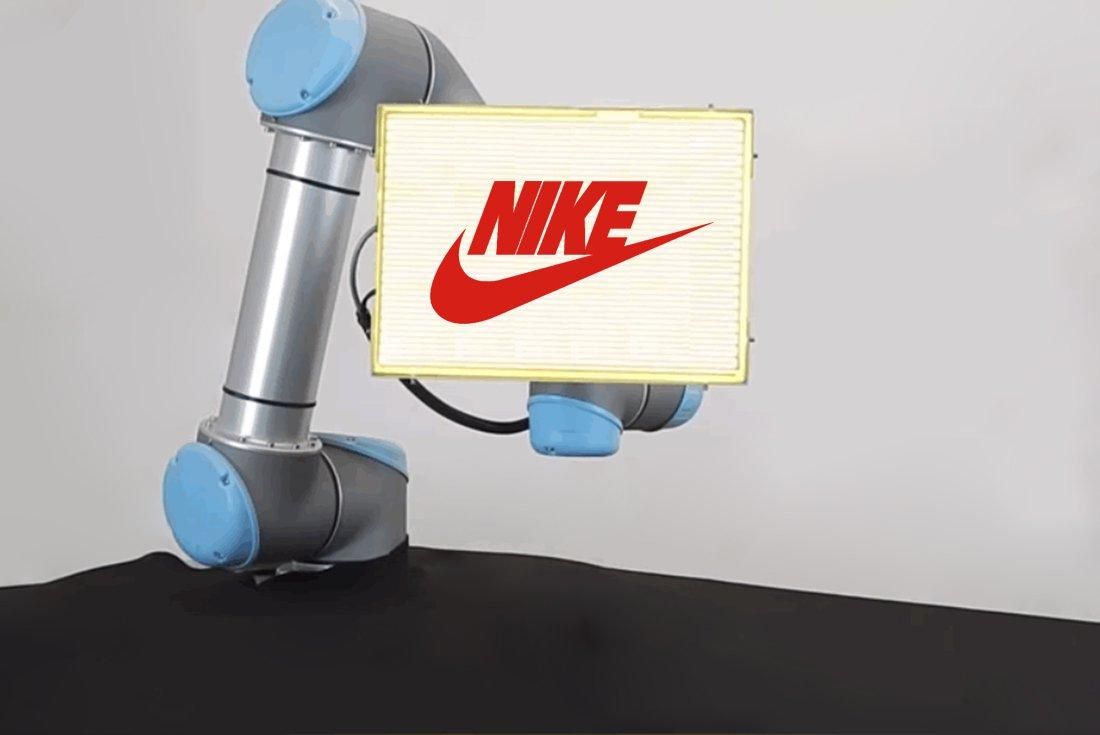Why Nike Shoe Production Remains A Challenge For Robots

Table of Contents
The Dexterity and Precision Hurdle
Shoe assembly is an intricate process requiring a high degree of dexterity and precision—qualities that current robotics struggle to replicate. The manufacturing process involves numerous delicate steps, demanding fine motor skills beyond the capabilities of most existing robotic systems.
- Precise gluing and stitching of various materials: Robots often struggle with the accuracy needed for consistent, strong, and aesthetically pleasing gluing and stitching, especially when dealing with varying material thicknesses and textures.
- Handling delicate fabrics and varying component shapes and sizes: The diverse range of materials used in Nike shoe production—from supple leather to rigid plastics—presents a challenge for robotic grippers designed for uniform objects.
- Adapting to inconsistencies in material properties: Slight variations in material consistency can significantly affect the manufacturing process. Robots lack the adaptability of human workers to adjust to these inconsistencies on the fly.
- The need for sensory feedback comparable to human touch: Human workers rely on tactile feedback to ensure proper alignment and pressure during assembly. Replicating this level of sensory feedback in robots is an ongoing challenge.
Current robotic grippers and manipulation systems often lack the necessary dexterity for these tasks. For example, precisely placing the intricate stitching on a Nike Air Max sole or consistently applying adhesive to the delicate upper remains a challenge for current robotic technology.
Variability in Materials and Manufacturing Processes
Nike shoes utilize a vast array of materials, including leather, synthetics, textiles, and various foams, each with unique properties. This material diversity presents significant challenges for robotic systems typically designed for repetitive tasks with consistent materials.
- Adapting to different material thicknesses and textures: Robots struggle to adjust their grip and manipulation techniques for materials with varying thicknesses, textures, and degrees of flexibility.
- Handling variations in material stiffness and elasticity: The differences in material stiffness and elasticity affect the force and pressure required during assembly, presenting a challenge for consistent robotic performance.
- The challenges of automated quality control across diverse materials: Ensuring consistent quality across a wide range of materials requires sophisticated visual and tactile inspection systems, which are still under development for the nuances of shoe manufacturing.
- Integrating diverse automated processes seamlessly: The integration of various automated processes, such as cutting, stitching, gluing, and assembly, into a cohesive and efficient robotic system remains a complex engineering challenge.
This inherent variability complicates programming and necessitates the development of highly adaptable and complex robotic systems capable of handling the diverse materials and processes involved in Nike shoe manufacturing.
The Economic Viability of Robotic Shoe Production
While automation offers potential long-term cost savings, the economic viability of implementing robotics in Nike shoe manufacturing is currently questionable. The high initial investment and ongoing maintenance costs must be weighed against the cost of human labor.
- High initial cost of robotic systems and specialized tooling: The purchase and installation of advanced robotic systems and specialized tooling represent a significant upfront investment.
- Ongoing maintenance and repair costs: Robotic systems require regular maintenance and repair, adding to the overall operational costs.
- Potential for production delays due to robotic malfunctions: Robotic malfunctions can lead to production delays and increased downtime, potentially offsetting any cost savings.
- The cost of retraining and upskilling the workforce for collaboration with robots: Integrating robots into existing production lines often requires retraining and upskilling the workforce to manage and collaborate effectively with the new technologies.
Considering the current economic landscape, the widespread adoption of robotic shoe production might not be economically feasible in the near future for Nike, given the high initial investment and ongoing operational costs.
The Role of Human Expertise and Creativity in Shoe Design and Production
Human craftsmanship and creative input remain crucial in Nike shoe design and production, particularly in areas demanding fine motor skills, adaptability, and judgment. Many aspects of the process currently defy complete automation.
- Complex design features requiring manual adjustments: The intricate designs of many Nike shoes require manual adjustments and fine-tuning during the manufacturing process.
- Custom shoe creation and personalization: The growing demand for customized shoes necessitates human involvement in design and manufacturing.
- Quality control checks requiring human judgment: Human inspectors remain essential for detecting subtle defects and ensuring the high quality standards associated with Nike products.
- Problem-solving and adaptation to unexpected issues: Human workers can quickly identify and resolve unexpected issues during production, a capability that robotic systems currently lack.
The unique features and quality associated with Nike shoes necessitate a level of human involvement that robots cannot currently replicate.
Conclusion: The Future of Robotics in Nike Shoe Production
Automating Nike shoe production faces significant challenges: dexterity limitations of current robotic systems, the variability of materials and manufacturing processes, economic considerations, and the irreplaceable role of human expertise. While progress is being made in areas like advanced AI and adaptable robotic grippers, complete automation remains a distant prospect.
The future of robotic automation in Nike factories likely involves a collaborative approach, combining human skills with robotic assistance for specific tasks. Further research and development are crucial, focusing on advanced AI for more adaptable robotic control, improved sensor technologies for enhanced tactile feedback, and more sophisticated robotic grippers for handling diverse materials. Overcoming these challenges in robotic Nike shoe production will require a concerted effort to bridge the gap between current technology and the intricate demands of high-quality shoe manufacturing.

Featured Posts
-
 Guilty Plea Lab Owner Admitted To Fraudulent Covid 19 Testing
Apr 22, 2025
Guilty Plea Lab Owner Admitted To Fraudulent Covid 19 Testing
Apr 22, 2025 -
 Trump Administration To Slash Another 1 Billion In Harvard Funding
Apr 22, 2025
Trump Administration To Slash Another 1 Billion In Harvard Funding
Apr 22, 2025 -
 Middle Managers The Unsung Heroes Of Business Success
Apr 22, 2025
Middle Managers The Unsung Heroes Of Business Success
Apr 22, 2025 -
 Trumps Supreme Court Defense Of Obamacare A Boost For Rfk Jr
Apr 22, 2025
Trumps Supreme Court Defense Of Obamacare A Boost For Rfk Jr
Apr 22, 2025 -
 Who Will Pay For Trumps Economic Policies
Apr 22, 2025
Who Will Pay For Trumps Economic Policies
Apr 22, 2025
